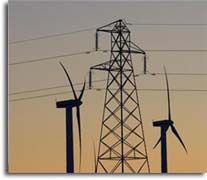In terms of fuel, coal-fired plants account for 56% of India's installed electricity capacity. After coal, renewal hydropower accounts for 19%, renewable energy for 12% and natural gas for about 9%.
In December 2011, over 300 million Indian citizens had no access to electricity. Over one third of India's rural population lacked electricity, as did 6% of the urban population. Of those who did have access to electricity in India, the supply was intermittent and unreliable. In 2010-2011, blackouts and power shedding interrupted irrigation and manufacturing across the country frequently. . India's total domestic, agricultural and industrial per capita energy consumption estimate vary depending on the source. Some sources place it between 400 to 700 kWh in 2008-2009. As of January 2012, one report found the per capita total consumption in India to be 778 kWh.

The International Energy Agency estimates India will add between 600 GW to 1200 GW of additional new power generation capacity before 2050. The technologies and fuel sources India adopts, as it adds this electricity generation capacity, may make significant impact to global resource usage and environmental issues. India's electricity sector is amongst the world's most active players in renewable energy utilization, especially wind energy As of December 2011, India had an installed capacity of about 22.4 GW of renewal technologies-based electricity.
 INDIAN power Industry AT A Glance IN 2012 - 2013
INDIAN power Industry AT A Glance IN 2012 - 2013
 back to power INDUSTRies
back to power INDUSTRies
 |
INDIAN INDUSTRIES |



 INDIAN POWER INDUSTRY AT A GLANCE IN 2011 - 2012
INDIAN POWER INDUSTRY AT A GLANCE IN 2011 - 2012